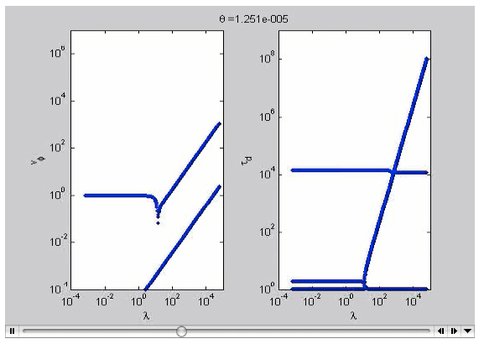2009 Annual Science Report
 Rensselaer Polytechnic Institute
Reporting | JUL 2008 – AUG 2009
Rensselaer Polytechnic Institute
Reporting | JUL 2008 – AUG 2009
Project 2: Processing of Precometary Ices in the Early Solar System
Project Summary
The discovery of numerous planetary systems still in the process of formation gives us a unique opportunity to glimpse how our own solar system may have formed 5 billion years ago. We use computers to simulate events called shock waves which are common in young planetary systems. These shock waves “light up” the gas and dust in young planetary systems, making it possible to observe molecules that would not be visible otherwise. Our goal is to determine whether some of the essential building blocks of life can be detected by exploiting this effect.
Project Progress
Precometary Ices in Molecular Clouds and Cores – The 5-year objective of this project is to model the spectra of precometary ices and gas-phase molecules which have been heated by multifluid MHD shock waves in and around protostars. Our goal is to motivate searches for prebiotic molecules in these environments using SOFIA, Herschel, and ground-based observatories. Our Year 1 work plan was to advance the theory of multifluid shocks by realistically including the dynamically important effects of dust grains. This is a formidable problem because (i) dust affects the dynamics in poorly understood ways; and (ii) these dynamical effects are size dependent and grains have a continuous size distribution. Some idea of the complexity is conveyed by the animation below, which describes a dusty plasma with just one grain size. The different curves show the phase velocity (left) and damping time (right) in certain dimensionless units. Several wave modes are allowed and as the grain abundance θ varies, they merge and change in complex ways (Roberge, Katz & Ciolek, in prep).
Magnetosound Waves in a Dusty Plasma
We have made excellent progress on (i) understanding the underlying dust physics; and (ii) developing approximations to model the grain size continuum. The figure below plots the phase velocity of one allowed mode versus frequency (in dimensionless units) for a realistic grain size distribution. The black curve is the exact dispersion relation and the colored curves are two different approximations we have developed. The remainder of Year 1 will be used to implement the best of these approximations in numerical shock codes to be used at our local supercomputer. We expect to submit 1-3 papers on this work by the end of Year 1.
Precometary Ices in Protoplanetary Disks – The 5-year objective for this project is to simulate shock waves inside protoplanetary disks. The goal is to model the heating of ice-covered dust grains in order (i) to determine whether shock-heated water and other molecules can be detected spectrocopically, e.g., by Herschel and SOFIA; and (ii) to model gas- and solid-phase prebiotic chemistry. Our Year 1 work plan was to begin the construction of a shock code. Grad student Pramesh Singh has made steady progress on the code development and we are on track to compute shock models in Year 2 (as called for in our work plan.) We have greatly leveraged this effort recently by initiating a collaboration on shock modeling with Steve Desch from the NAI team at ASU. A preliminary work plan for the collaboration exists and will be refined later in Year 1 when Roberge visits ASU. We expect to submit 0-1 papers on this work by the end of Year 1.
A by-product of this investigation is the discovery a new mechanism whereby asteroids in the early solar system were heated by magnetic fields. This is a high-risk project but the potential reward is very large: understanding the thermal histories of asteroids is a major unsolved problem.
Publications
- Ciolek, G.E. & Roberge, W.G. (In Preparation). Magnetohydrodynamic Shock Waves and Signal Speeds in Weakly Ionized, Dusty Interstellar Clouds with a Distribution of Grain Radii.
- Roberge, W.G., Katz, M. & Ciolek, G.E. (In Preparation). Driven Waves in a Dusty Plasma.
- Roberge, W.G., Menzel, R. & Ciolek, G.E. (In Preparation). Magnetic Heating of Primitive Solar System Bodies.
-
PROJECT INVESTIGATORS:
-
PROJECT MEMBERS:
Glenn Ciolek
Collaborator
George Hassel
Collaborator
Eric Herbst
Collaborator
Douglas Whittet
Collaborator
Pramesh Singh
Graduate Student
Max Katz
Undergraduate Student
Raymond Menzel
Undergraduate Student
Anthony Tamalonis
Undergraduate Student
-
RELATED OBJECTIVES:
Objective 1.1
Formation and evolution of habitable planets.
Objective 3.1
Sources of prebiotic materials and catalysts
Objective 3.2
Origins and evolution of functional biomolecules
